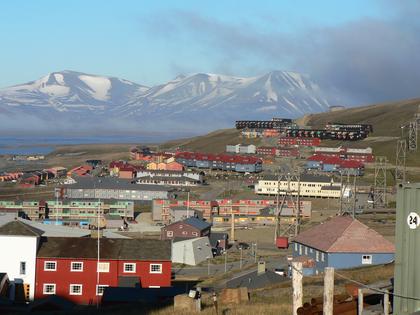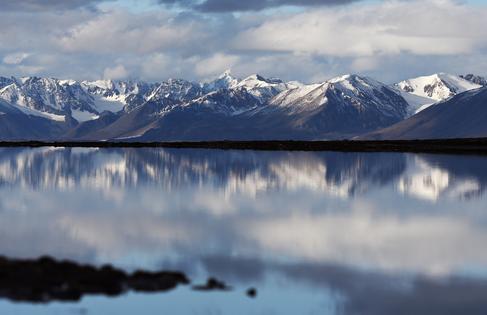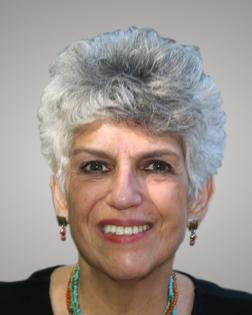Taking the Kids: To the Arctic and learning more about climate change
They must have partied really hard. The 80-plus guests were lying on the black sand beach, intermittently groaning, or taking a restorative dip in the water.
We were on day four of our two- week Abercrombie & Kent Arctic Cruise Adventure “In Search of the Polar Bear”. We hopped onto Zodiacs from the ship (the Ponant Le Lyrial) to Wahlbergoya, an island in the Hinlopen Strait. Norway administers most of this remote territory in the Svalbard Archipelago, about 80 degrees North Latitude (the Arctic Circle begins at 66 degrees).
The partygoers were a group of bachelor walruses who live in the Arctic Ocean and subarctic seas of the Northern Hemisphere. Full grown, they weigh more than 4,400 pounds. They are iconic for not only their bulk but their long white tusks. We know they are males because they live in a herd separate from females.
We stood on the beach, a safe distance away, watching them, taking pictures. For me, this was a high point of our Arctic adventure. For others, it was seeing a polar bear and her two cubs onshore, a great distance from the ship. There were icebergs, each with a distinct shape, floating by the ship, along with the calving glaciers. Or how about the 100,000 Guillemots (aka Murres) we saw perched on every ledge of some 320-foot-high cliffs, with thousands of breeding pairs jockeying for space. Some of our group enjoyed jumping into the icy water beneath a thundering waterfall in Iceland. Then there is the moon-like beauty of Jan Mayen, a little-known volcanic island in the Greenland Sea. (Read more in my Arctic Travel Diaries.)
Everyone was impressed by the 16-member A&K expedition team. We had lectures from world-renowned experts on polar bears, climate change, geology and birds. (The Arctic tern migrates more than 44,000 miles each year from the Arctic to Antarctica, the longest migration of any animal, ornithologist Dr. Pepper Trail informed us). We learned photography tricks to take better smartphone photos. And we listened raptly to stories of the polar explorers. “Human stories beg belief in the Arctic. Such human drama,” said historian Rob Caskie.
Besides the informative lectures, the expedition team was out there spotting for polar bear, birds, and yes, the harp seals before we could see them on the sea ice, making announcements for us to come on deck to see them.
“When I see a plant, I haven’t seen before, that is joy for me,” said Nellie Nilsen, a botanist from Norway who teaches at the university level, as well as conducting genetic and ecological research. “Also joyful is sharing the experience with those on holiday,” she said. “People get so excited … and when they are surrounded by experts, that makes the world bigger. It is one thing to look at a glacier and another to understand what you are looking at.”
“It’s so nice to just show up and everything is taken care of,” observed Nikki Stevens, a Coloradan often tasked by her friends and family with planning trips.“It is all fantastic,” she said. “The wildlife, meeting people from all over, the food, and even taking a nap in the afternoon,” she joked. “I feel really lucky to be in this place that few people get to see.”
“I liked everything about this trip,” declared the lone teen on board, traveling with his grandmother from California.
The 120 passengers came from 16 different countries and range in age from 16 to late 80’s and they got to know each other over meals, Zodiac rides, hikes and evening programs. (Karaoke, anyone?). We were given cozy red parkas, water bottles and waterproof backpacks and high rubber boots and waterproof pants, making it much easier to pack. The trip is completely all inclusive – no need to pay for drinks, tip guides or other extras as on other adventure trips and cruises.
The group met in Oslo before a chartered flight to the tiny town of Longyearbyen with just 2, 500 people and famous for the Global Seed Vault. It was established by Norway in 2008 as a safety backup deep inside the permafrost of a mountain where some 4.5 million seed samples can be kept in optimal condition
This trip is designed for those who want an adventure, but with creature comforts. On board the Le Lyrial, there is a heated pool, a small fitness center, spa services and tea with irresistible pastries every afternoon. The food was excellent at both restaurants, one buffet style, and one with sit- down service. The crew couldn’t be more attentive, guests agree. “When I’m on vacation, I want what I don’t have at home,” said Gwen Scharp, from Lubbock, Texas.
We are sobered by seeing the impact of climate change.“The Arctic shows the highest rate of change worldwide,” explained Dr. Trail. The Arctic, we learn, is made up of 36,000 islands, the largest is Greenland where the ice cap is melting at an unprecedented rate as the ocean warms. “Every bird is affected,” said Trail.
Morten Jorgensen, another member of the expedition team and a renowned expert on polar bears, also the author of “Polar Bears Beloved & Betrayed,” explains how the melting ice has reduced polar bear habitat making it much more difficult for them to hunt enough seals to survive.
At the same time, Jorgensen said, the most serious threat to them is legal killing. Though the polar bear is a threatened species, legal killing by indigenous peoples is permitted in some countries, with most done in Canada – 1,000 animals a year.
The majority on board have already visited Antarctica. But Dr. James McClintock, the endowed professor of polar and marine biology at the University of Alabama at Birmingham and the author of “Lost Antarctica, Adventures in a Disappearing Land”, suggests visiting the Arctic first.
Our expedition leader, Chris Srigley, compares Antarctica to a person “with a big personality … look at me, they are saying.” The Arctic on the other hand, is like “the shy person you have to draw out and appreciate their subtleties. You have to be patient and be accepting of what the Arctic gives you,” he said.
He was talking specifically about the thousands of harp seals we saw on sea ice.“In all my trips, I’ve never seen that many seals at once. I love the challenge of the Arctic,” he explained, “But you have to manage your expectations.”
Some were disappointed that we didn’t see more polar bears. All the more reason to return, suggested Nellie Nilsen.
Having visited both ends of the planet, I think Antarctica is a better bet for a first timer, and especially with teens and tweens, as the wildlife is so abundant everywhere you go. (Kids sail free on the Antarctica Holiday Voyage and there is no single supplement for solo travelers). But for those with adult kids, either is a terrific experience.
“I’ve wanted to come to the Arctic ever since we went to Antarctica 10 years ago,” said one Californian traveling with her three grown children and her son’s partner. “I thought our days of traveling together were over when they went to college,” she said, “I’m grateful not only to be here – it’s fantastic – but to be here with my people.”
========
(For more Taking the Kids, visit www.takingthekids.com and also follow TakingTheKids on Twitter, Facebook and Instagram where Eileen Ogintz welcomes your questions and comments. The fourth edition of The Kid’s Guide to New York City and the third edition of The Kid’s Guide to Washington D.C. are the latest in a series of 14 books for kid travelers published by Eileen.)
©2024 Eileen Ogintz. Distributed by Tribune Content Agency, LLC.
(c) 2024 DISTRIBUTED BY TRIBUNE MEDIA SERVICES, INC.
















Comments